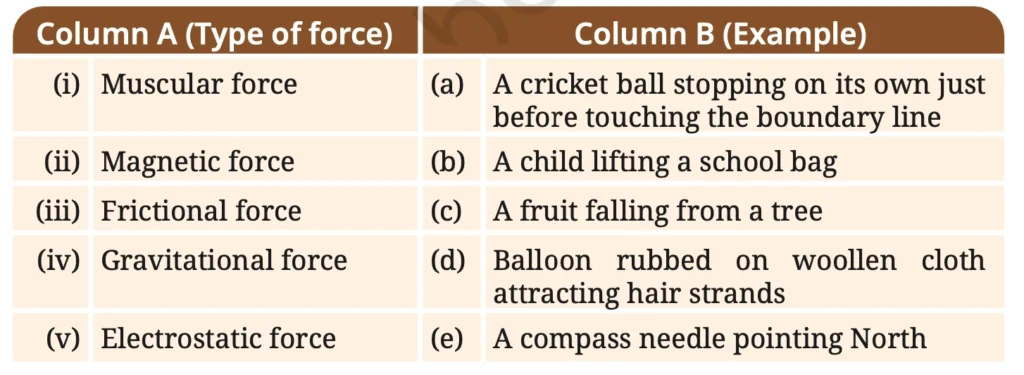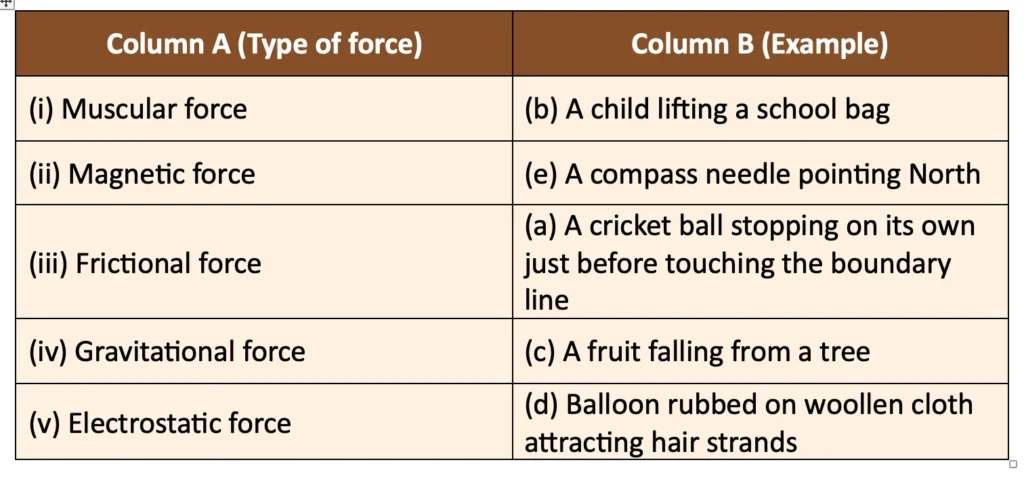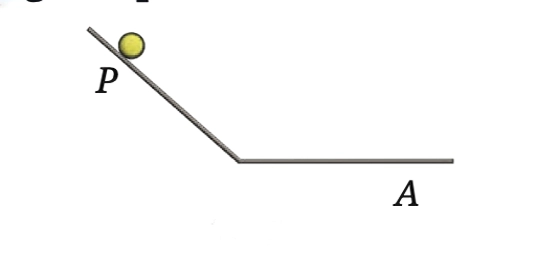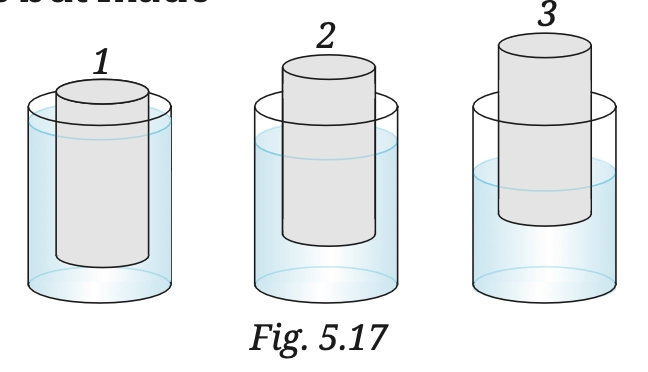Exploring Forces Class 8 Science Curiosity Chapter 5 NCERT Solutions
Probe and ponder (Page 62)
1. Why does it feel harder to pedal a bicycle when going uphill than on flat ground?
Answer:
When a bicycle goes uphill, it experiences a downward pull along the slope of the hill due to the gravitational force of the Earth, making it harder to pedal. On flat ground, only friction and air resistance oppose motion, so less effort is required.
2. Why is it easier to slip on a wet surface?
Answer:
When the floor is wet, a thin layer of water forms between the ground and our feet. This water fills the tiny irregularities of the surface and makes it smooth. As a result, the friction between our feet and the floor decreases, which makes it easier to slip.
3. Why do we feel ‘light’ or like we are ‘floating’ just after our swing reaches its highest point and begins to come down?
Answer:
When the swing reaches its highest point and just begins to move down, it is momentarily in a state of free fall under the influence of gravity, with no upward support from the swing. This creates a feeling of weightlessness, which makes us feel ‘light’ or as if we are ‘floating’.
Keep the curiosity alive (Page 77 – 79)
1. Match items in Column A with the items in Column B.

Answer:

2. State whether the following statements are True or False.
(i) A force is always required to change the speed of motion of an object.
(ii) Due to friction, the speed of the ball rolling on a flat ground increases.
(iii) There is no force between two charged objects placed at a small distance apart.
Answer:
(i) True.
(ii) False.
Friction acts opposite to the direction of motion, so it decreases the speed of the ball rolling on a flat surface.
(iii) False.
An electrostatic force (attractive or repulsive) acts between two charged objects placed close to each other.
3. Two balloons rubbed with a woollen cloth are brought near each other. What would happen and why?
Answer:
When two balloons are rubbed with a woollen cloth, they acquire the same type of static charge. Since like charges repel each other, the balloons push each other away when brought near.
4. When you drop a coin in a glass of water, it sinks, but when you place a bigger wooden block in water, it floats. Explain.
Answer:
A coin sinks in water because its weight is greater than the buoyant force acting on it. Also, the density of the coin is higher than that of water. On the other hand, a wooden block floats because its weight is less than the buoyant force and its density is lower than that of water.
5. If a ball is thrown upwards, it slows down, stops momentarily, and then falls back to the ground. Name the forces acting on the ball and specify their directions.
(i) During its upward motion
(ii) During its downward motion
(iii) At its topmost position
Answer:
(i) During upward motion: The force of gravity acts downward, the ball moves upward, but gravity opposes its motion, so it slows down.
(ii) During downward motion: The force of gravity still acts downward, the ball also moves downward, so gravity makes it speed up.
(iii) At its topmost position: The velocity of the ball becomes zero for an instant, but the force of gravity still acts downward, pulling the ball back towards the Earth.
6. A ball is released from the point P and moves along an inclined plane and then along a horizontal surface as shown in the Fig. 5.16. It comes to stop at the point A on the horizontal surface. Think of a way so that when the ball is released from the same point P, it stops (i) before the point A (ii) after crossing the point A.

Answer:
(i) To make the ball stop before point A, the horizontal surface must be made rougher. This increases the frictional force, so the ball slows down faster and stops before reaching A.
(ii) To make the ball stop after crossing point A, the horizontal surface must be made smoother. This decreases the frictional force, so the ball rolls further and stops after crossing A.
7. Why do we sometimes slip on smooth surfaces like ice or polished floors? Explain.
Answer:
When we walk, friction provides the necessary grip between our feet and the ground, helping us maintain balance. On smooth surfaces like ice or polished floors, the force of friction is very small. As a result, we lose grip easily and may slip and fall.
8. Is any force being applied to an object in a non-uniform motion?
Answer:
Yes, in a non-uniform motion, a force is being applied to the object. Non-uniform motion means the object’s velocity is changing (either in speed or direction). And this change in velocity (acceleration) occurs only when a net external force acts on the object.
9. The weight of an object on the Moon becomes one-sixth of its weight on the Earth. What causes this change? Does the mass of the object also become one-sixth of its mass on the Earth?
Answer:
The weight of an object depends on the gravitational force acting on it. Since the Moon’s gravity is one-sixth of Earth’s, the weight of an object on the Moon becomes one-sixth of its weight on Earth. The mass of an object, however, is the amount of matter in it and does not change with location. Therefore, its mass remains the same on both the Earth and the Moon.
10. Three objects 1, 2, and 3 of the same size and shape but made of different materials are placed in the water. They dip to different depths as shown in Fig. 5.17.

If the weights of the three objects 1, 2, and 3 are w1, w2, and w3, respectively, then
(i) w1 = w2 = w3
(ii) w1 > w2 > w3
(iii) w2 > w3 > w1
(iv) w3 > w1 > w2
Answer:
(ii) w1 > w2 > w3 is the correct option.
This is because heavier objects sink deeper in water as their weight is greater than the buoyant force, while lighter objects float higher since the buoyant force balances their weight.
